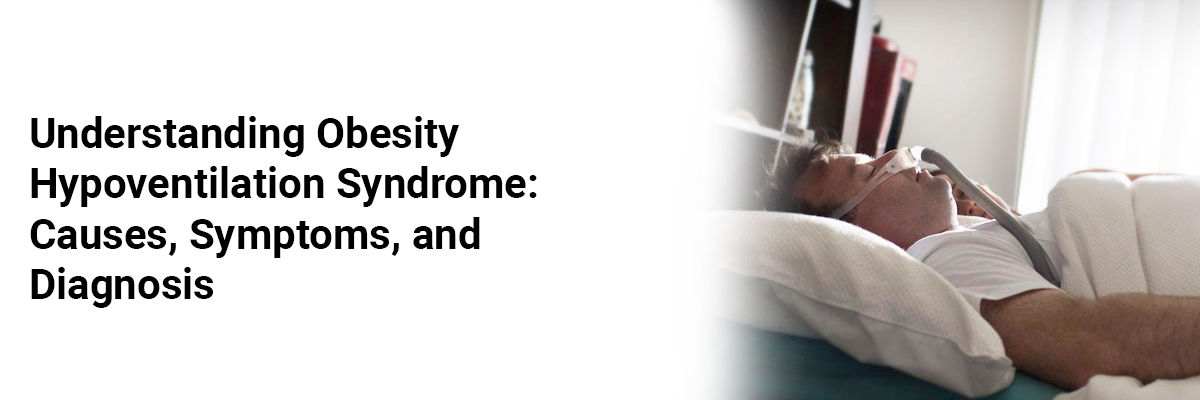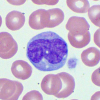
 Mr. Ankit Ahuja
Mr. Ankit Ahuja
Understanding Obesity Hypoventilation Syndrome: Causes, Symptoms, and Diagnosis
Obesity hypoventilation syndrome (OHS) is a respiratory disorder that affects some individuals with obesity, causing too much carbon dioxide and too little oxygen in their blood. This condition is caused by hypoventilation, a slow breathing rate that does not move enough air in and out of the lungs.
OHS is an obesity disease, typically a combination of obesity, hypoventilation, and sleep-disordered breathing, such as obstructive sleep apnea. Also known as Pickwickian syndrome, OHS can cause life-threatening health issues but is treatable.
Prevalence, Symptoms, and Causative Factors
OHS is a relatively uncommon disorder, but its prevalence has increased in recent years due to the global obesity epidemic. The exact prevalence of OHS is challenging to be determined accurately as it often goes undiagnosed or misdiagnosed; however, studies estimate that OHS affects approximately 10-20% of obese individuals. This prevalence varies depending on factors such as age, gender, and other comorbidities.
Symptoms of OHS include shortness of breath, fatigue, lack of energy, daytime sluggishness, headaches, dizziness, and depression, which can worsen over time. Additionally, the individual may experience loud snoring, gasping, or choking during sleep and breathing pauses.
Obesity hypoventilation syndrome (OHS), an overweight side effect, is believed to result from a combination of factors, although the exact cause is unknown. Some of these factors may include a defect in the brain's breathing control, excess weight against the chest wall that makes it difficult for the muscles to breathe deeply and fast enough, and hormones produced by excess fat in the neck, chest, and abdomen that affect breathing patterns. Obesity and sleep apnea are also risk factors for developing OHS. However, it is unclear why some people with obesity develop OHS while others do not.
Diagnostic Procedures
To diagnose OHS, healthcare providers typically look for signs of obesity, including a body mass index (BMI) of 30 or higher, and perform a physical exam. They may also look for symptoms such as cyanosis (bluish color in the lips, fingers, toes, or skin), reddish skin, right-sided heart failure (cor pulmonale), and extreme sleepiness.
Healthcare providers can distinguish OHS from obstructive sleep apnea by measuring the amount of carbon dioxide in the blood when the person is awake. Diagnostic tests may include arterial blood gas, chest X-ray or CT scan, pulmonary function tests, sleep study, and echocardiogram. In addition to physical measurements and diagnostic tests, healthcare providers may assess waist and neck circumference to help diagnose OHS.
Management and Treatment Modalities
Obesity hypoventilation syndrome is a condition that causes poor breathing and results in lower oxygen and higher carbon dioxide levels in the blood; hence its treatment primarily involves weight loss/ obesity treatment and breathing assistance.
• Achieving a healthy weight is the first step in treating OHS. Eating a nutritious diet, such as the Mediterranean diet, engaging in physical activity for at least 30 minutes daily, and adopting good sleep habits can help.
• Clinical interventions such as breathing assistance may be necessary to treat OHS. Non-invasive mechanical ventilation, such as CPAP or bilevel positive airway pressure (BiPAP), can help keep the airways open at night, increasing blood oxygen levels. Oxygen therapy or a tracheostomy may be required for severe cases.
• In some cases, weight-loss surgery (such as gastric bypass surgery) or medication may be recommended.
Treatment for OHS can reduce or eliminate symptoms and improve quality of life while decreasing the risk of further complications. Early use of a breathing device can even reduce the mortality rate by 10%.
Clinical Complications Associated with OHS
OHS poses significant health risks, including cardiovascular complications and respiratory failure. In addition to heart and blood vessel problems, OHS can cause complications related to lack of sleep, including depression, agitation, irritability, and increased risk of accidents. It can also affect intimacy and sex. High blood pressure, right-sided heart failure, and pulmonary hypertension are also potential heart-related complications of OHS. Untreated OHS can also lead to a shortened life expectancy, with a mortality rate of 23% over an 18-month period in people with other medical conditions.
Preventive Strategies
Following your healthcare provider's instructions for using the CPAP machine and maintaining a healthy lifestyle is important to prevent complications. Be sure to inform your provider of any new symptoms, such as chest pain, lightheadedness, swelling around your ankles, or wheezing. Before flying or having surgery, discuss any risks with your provider, as these situations can increase the chances of serious complications.
Seek medical attention right away if:
• You have obesity and other symptoms associated with OHS.
• Your bed partner notices you snore loudly or experience pauses in your breathing while sleeping.
• You experience excessive daytime fatigue.
Conclusion
In conclusion, obesity hypoventilation syndrome is a severe condition emerging as a side effect of obesity with life-threatening consequences if left untreated. It is essential to seek medical attention if one experiences symptoms such as loud snoring, pauses in breathing, or excessive daytime fatigue, especially if the person is overweight or obese. Working with a healthcare provider can help make a proper diagnosis and establish a suitable treatment plan. Early treatment can reduce or eliminate symptoms, improve the quality of life, and prevent further complications.
Remember, if you suspect you may have OHS, don't hesitate to contact a healthcare professional as soon as possible.




.jpg)










Please login to comment on this article